Reimagining Spaces: Transforming Post-Pandemic Workplaces
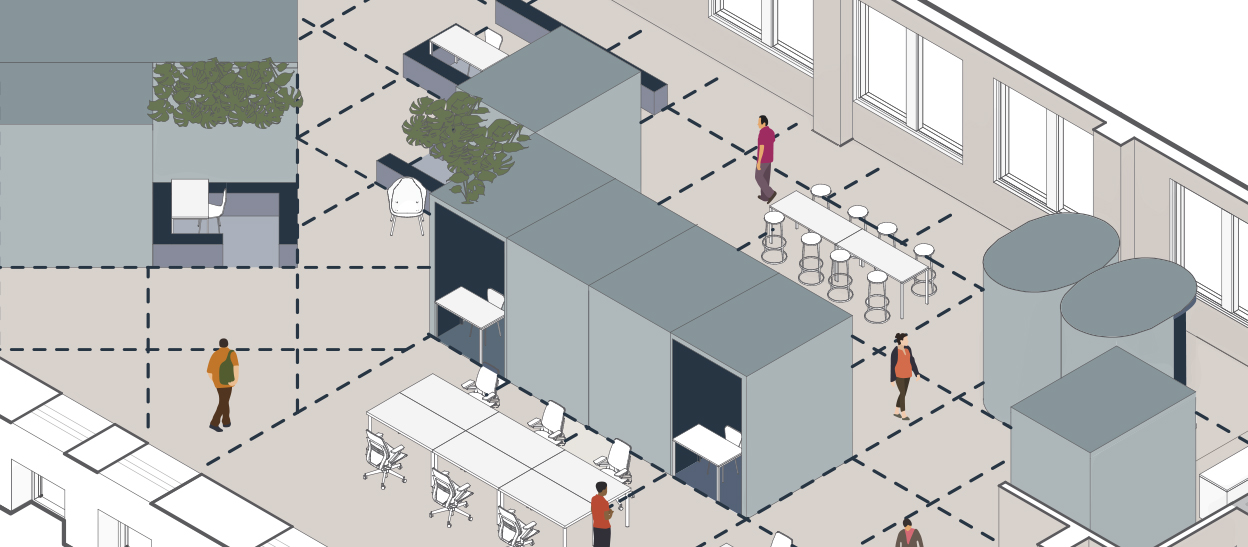
Concept 1: Transform
In today's pandemic-aware environment, offices are changing to suit the reality of a mobile workforce, and traditional footprints no longer apply. In lieu of an open office or large private offices, we’re exploring the idea of smaller, more transformable spaces that suit a variety of needs. The use of something like a "pod" could offer a compelling way forward, especially when matched with a diverse floor plan based on a modular grid layout.
In our Transform concept, pods can occupy less space, and they are the definition of transformability. They can provide sound control (needed for video or phone calls), privacy and the ability to focus. They can be highly mobile and easily transformed into meeting spaces or even sleeping spaces. They can provide maximum resilience and flexibility to accommodate spatial needs that could follow daily, even hourly, cycles. They can also address needs presented by natural disasters or sudden curfew or shelter-in-place requirements.
We’ve developed three pod types that accomodate a broad range of needs. We call these The View Pod, The Meeting Pod and The Open Pod. Each pod shares a consistent 6'x8' footprint, allowing them to be interchangeable throughout the grid on which they sit. Grouping the pods in clusters opens up space elsewhere that can be devoted to a variety of uses and maximizing the variable placement of furniture.
Depending on the task and the need, each pod could transform from assigned to hoteling (that is, non-assigned); it could also transition from a working pod to one that accommodates sleeping. The result is a diverse floor plan that creates a dialogue between open and closed, private and public.
![]()
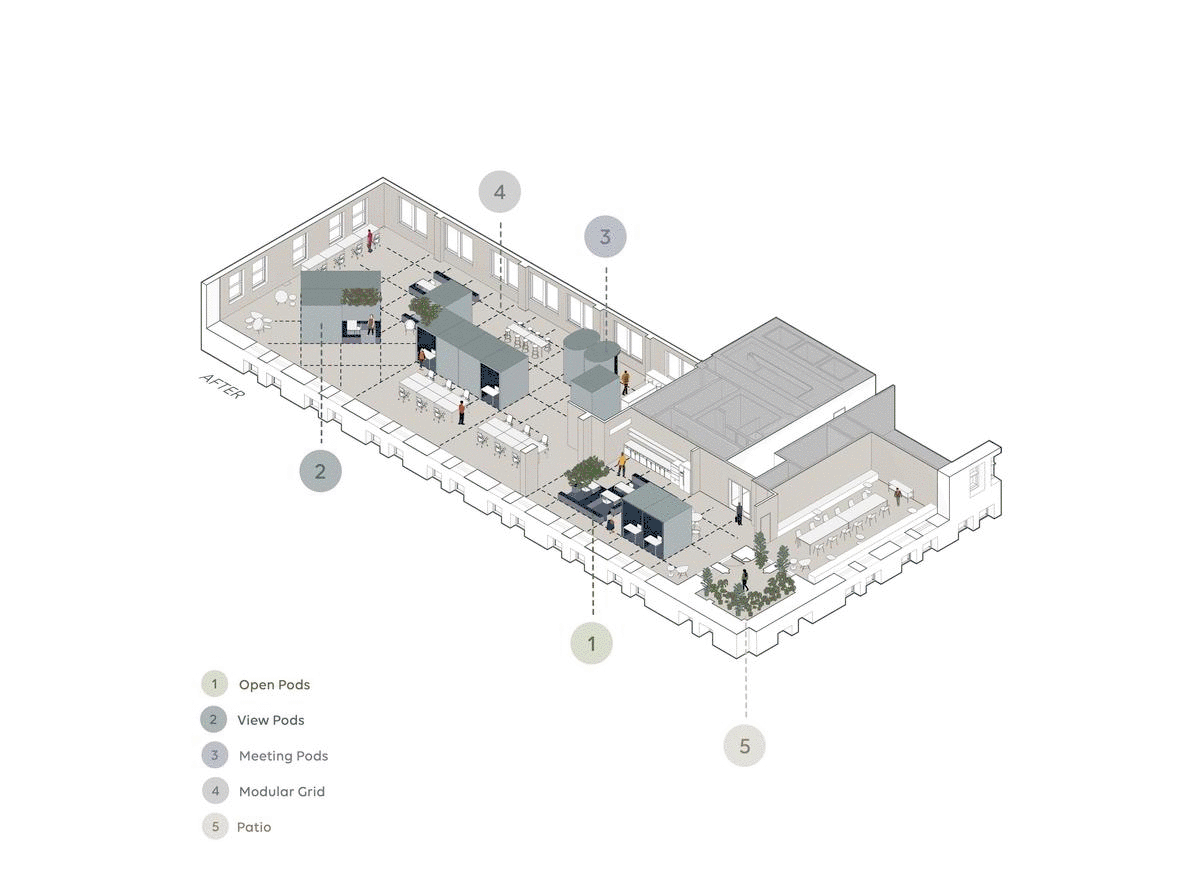
The View Pod
The View Pod is designed for maximum resilience supporting unexpected shelter-in-place requirements. Enclosed on all sides with one main opening directed towards a chosen view, these pods could face exterior windows or a common open space within the office. It transforms from day to night through working and sleeping amenities that can be folded and tucked away. In its workspace scenario, The View ensures privacy and sound isolation, while remaining visually connected to elements beyond. The sleep scenario can host a mattress for an overnight stay.
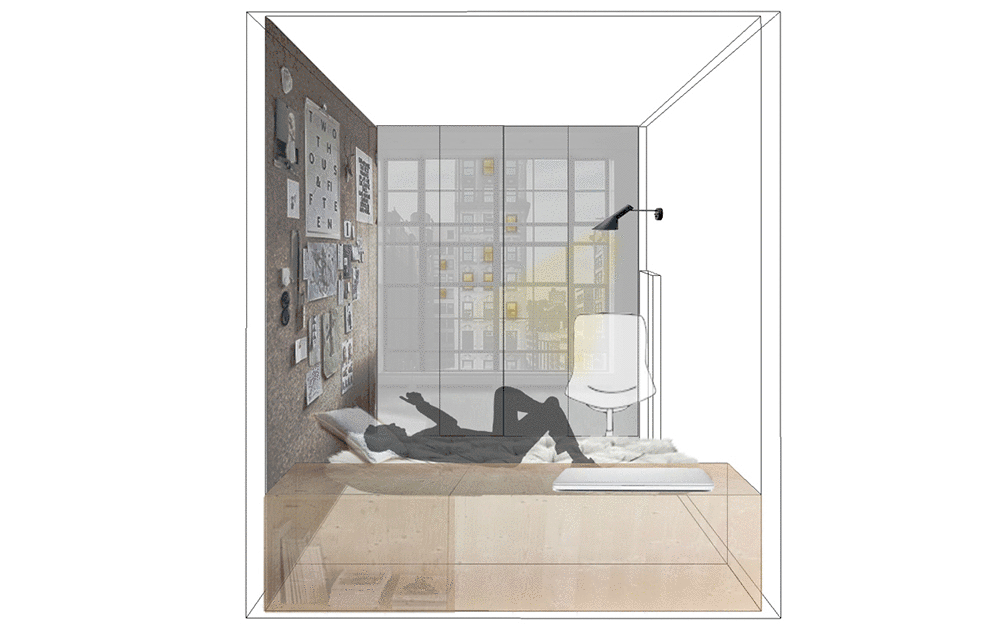
The Meeting Pod
The Meeting Pod provides flexibility for open or enclosed meetings. Its circular footprint provides acoustic privacy for video calls and to aid in focus. Built-in millwork offers dual functions for seating and storage. Integrated lighting and tackable surfaces present a clean background for personalization and work-based pin-ups. Each Meeting Pod provides an ideal space for quick interpersonal connections for up to three people.
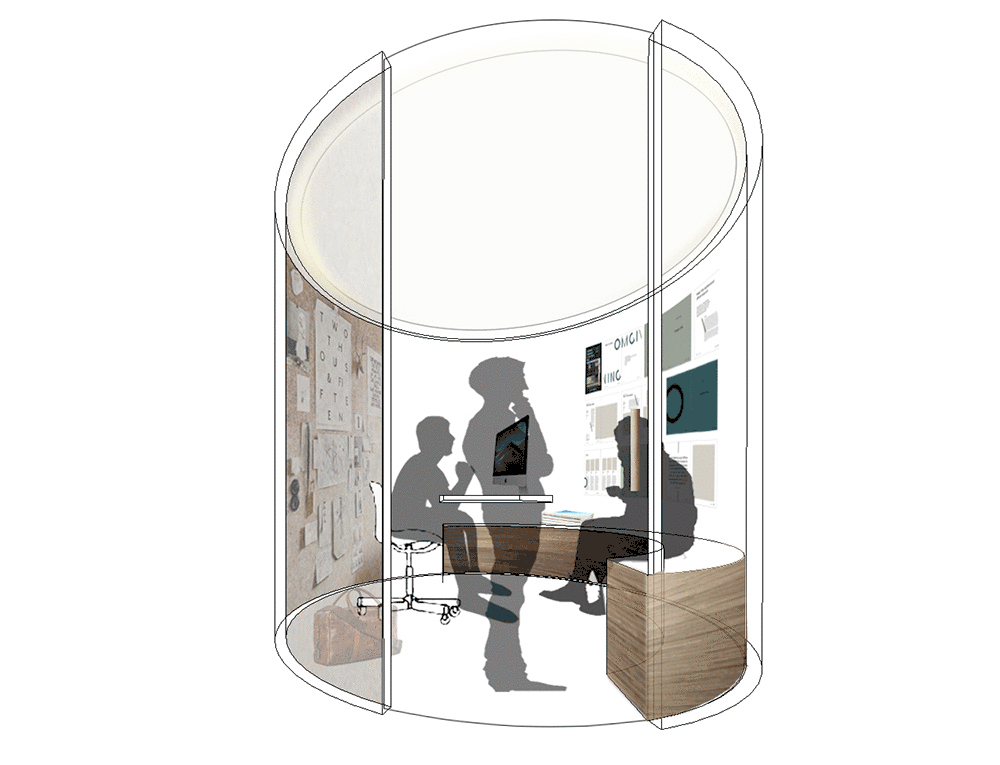
The Open Pod
The Open Pod provides a modular footprint with varying barrier preferences. It defines an individual space while staying visually connected to the communal space. The barrier preferences can be seen as a "kit of parts," adjustable to an open or enclosed layout, based on the occupant's needs. Greenery, suspended from above or in planters, can be used to define zones and remind inhabitants to prioritize wellbeing. The Open Pod provides built-in lockers, open shelving and the option for a height-adjustable desk.

Mobile Remote Workforce
As the technological tools that support massive workforce decentralization continue to mature, we see how working remotely can be just as effective as working in an office.
We now believe we will see a corresponding shift in cultural values—especially as they relate to transience and notions of work-life balance (a highly subjective term anyway). So, once working from home becomes the rule rather than the exception, why stop at home?
![]()
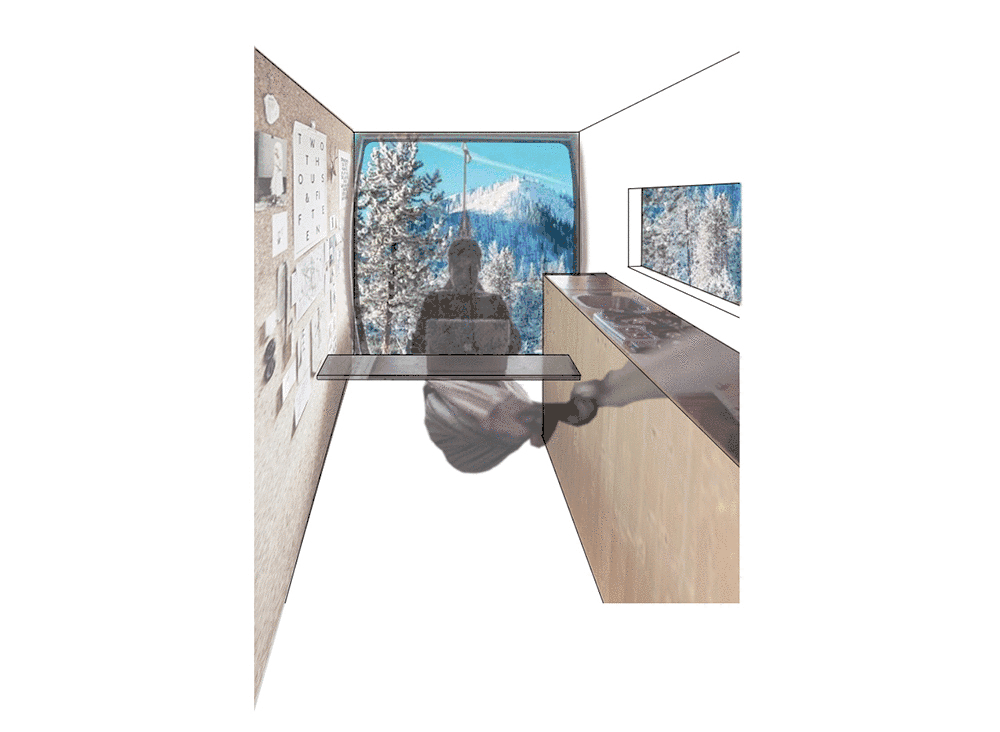
A fully-equipped van, owned or subsidized by the employee's company, would redefine and inspire a new concept of "remote" work. Assuming a reliable internet connection, a strong emphasis on scheduling and the formation of good new habits, there would be little to no impact on productivity. Productivity may even increase, for nature-oriented people who are motivated by an itinerant lifestyle but who could never find the chance to get away. This solution would be especially useful in professional-service sectors where in-person contact or field verification might offer some special value to the project or client.
In our next post, we explore ways to generate revenue from vacant or underutilized office spaces.
Amid the upheaval from today's pandemic, we see one clear implication for our industry: space design is entering a whole new era, and there's no going back. Since March 2020, Omgivning has been exploring the potential of this design evolution and reimagining three space types in particular: Workplace, Multifamily and Commercial.
Click here for our complete Reimagining the Workplace design report.
